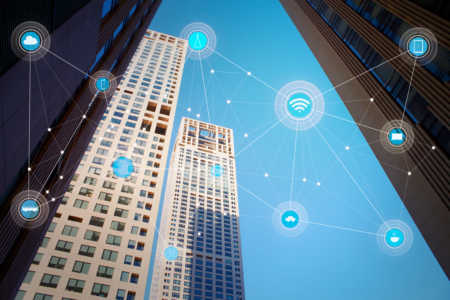Smart Workplace and the Internet of Things
“Any place you spend 8+ hours at daily is worth improving.” Says Robin co-founder and CEO Sam Dunn. “And for many people, offices are a time capsule of technology.”
If for your effectiveness and efficiency play a major role, you should adapt to which allow you to get flexible. A smart workplace is effectively using what the latest technologies are providing since everything is moving up.
What’s the most important asset that today’s organization wants to manage?
It people, time and space. Competition is increasing leaps and bound, business need to adopt new technologies to stay in the market and provide better.
Gartner forecasts 10 billion business (non-consumer) endpoints in offices and other workplaces worldwide by 2021, with a CAGR of 30.7%
Why a smart workplace?
IoT is the universe of devices, software and system that directly in the physical environment and communicating with each other and IT infrastructure.
It is one of the foundational drivers for the emergence of the Smart digital workplace. Workplaces equipped with various growing range of sensors will be able to provide enhanced, interactive experience to their visitors, occupants, and managers.
With the advancement and extensive research in IoT, developing IoT products is quite easy, and within realistic budgets.
Smart Workplace & Office Examples
Despite the growing adoption of smart tech in office, it is still in its early stage of development. Other IoT initiatives have matured significantly. Some of these matured initiatives are home automation, retail, and healthcare.
However, there still some real time examples you can implement straightaway.
Security Solutions
Smart lock, security camera, and various other sensors are the most popular and frequently used security solutions used presently.
In addition to that, you can replace the old pass physical infrastructure with the digital one with ease. All you need is your smartphone and an app installed in it to clock in.
Apart from that, Visitor Management and Access Control can also be installed tp make your physical entry full proof.
Energy Usage
Using IoT in an office can drastically reduce energy usage by implementing a smart lightning solution or automated window shades. This can control light intensity and color and help to cut down waste in your smart workplace. As soon as the sensor understands that there is no one in the room, it will automatically turn off the light.
Along with it you can put yourself in full control of that by installing complete energy management system in place.
Climate Control
The smart thermostat of any other temperature control devices can be installed to control room temperature. These are the various product such as Nest or Honeywell which are easy to work on. It also saves energy just like IoT lightning solutions.
Communication and Collaboration
IoT enables conference room presents ample opportunities to simplify the number of task including room occupancy management. Smart scheduling for meeting rooms can make life a lot easier, solving the problem of space management and coordination.
Smart Workplace Specification
Before modifying the work environment, needs of doing so should be specified. Work specification will include specifying the User first. The users will be the employee of your organization and you will be automating the space for their convenience. They are the one who is driving you towards your vision for the future.
Then comes the Tasks you need to perform with automation, and, finally the Needs of your organization.
“Strategy and target should always define the objective of change.”
I recommend you to consider the below parameters while modifying your workplace into IoT enabled one.
Orientation to activity based office
Changes to activity based office change the way of working of a company, its is of paramount importance to orient you personas and end users to the new way of working at the immediate startup phase.
Working Environment Survey
It is highly recommended perform work environment survey to all users of the premise. Both, the collected user data and the orientation to the way of working help the changed management.
At the end draw an analysis from the result of the work environment survey. This analysis will form the basis of the tentative workspace plan for the work environment in question.
Smart Workplace, New Demand at the edge
Enterprise network faces tremendous opportunities and challenges with the rise of IoT. As IoT grows the traffic associated with it need to be connected to the enterprise network in order to enable and experience new services. Let’s look at each prospective new demand which can arise:
Huge Bandwidth:
Each connected device to the network requires sufficient bandwidth, security protection and access to other resources on the network. The connectivity should be reliable scalable and flexible to support IoT environment.
At the connectivity layer, this requires coordinated management, support for multiple radio access network(RAN’s). At higher levels network must provide API’s, intelligent data analytics and machine learning.
Secure Compute Resources:
As more and more sensors are getting connected, more data will be generated which will require secure computing resources.
IoT in the workplace: Future Developments
The use of industrial smart sensors is going to increase in future, which will make everything easier to measure which goes into physical in the office. Although it will make office infrastructure more efficient, but can also introduce new challenges.
- Employees may not like to be monitored by their smart desk or through their badges or any other system.
- Managers will need to take care of the data generated by these systems.
Well talking about a future area of development, integrating wearable devices with the smart office is the one potential area. It will be superficial to imagine that smartwatches being able to open door to our office and log into your system, but it can incorporate other sensors within. For example, HR could get an alert if anyone’s heart rate began to peak while dealing with a particular stressful manager.
Conclusion
All stakeholders and the end user can benefit from an organized approach to IoT, with a set of goals, strategy, and roadmap. The process should begin sooner rather than later because IoT tends to grow organically unless there is cooperation among groups towards common goals.
 This article was written by Parikshit Joshi. He leads IoT and Data Science teams at Simform. In his free time, he works on the next generation of AI to build fully autonomous smart machines.
This article was written by Parikshit Joshi. He leads IoT and Data Science teams at Simform. In his free time, he works on the next generation of AI to build fully autonomous smart machines.



